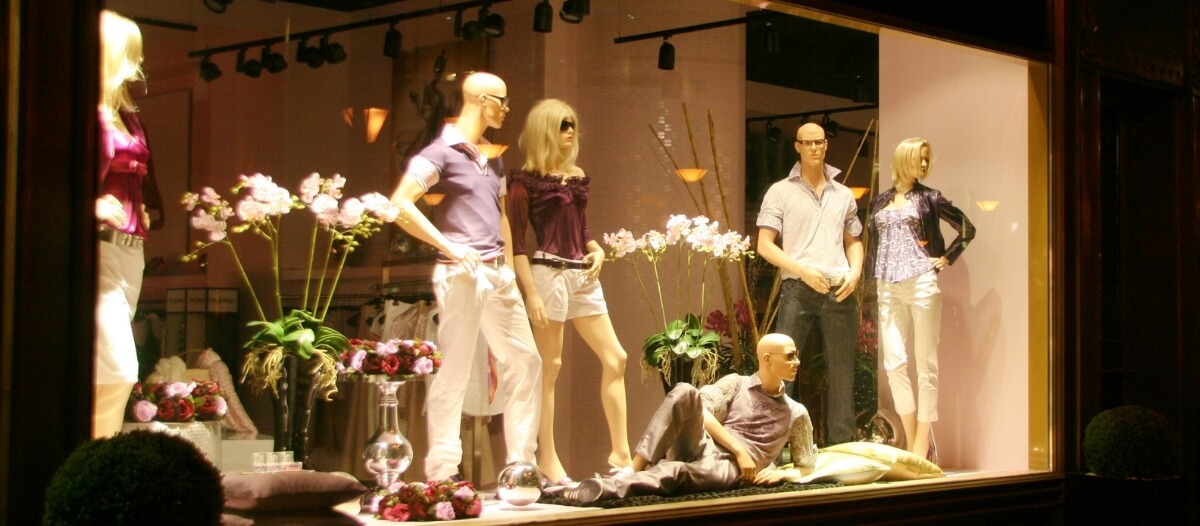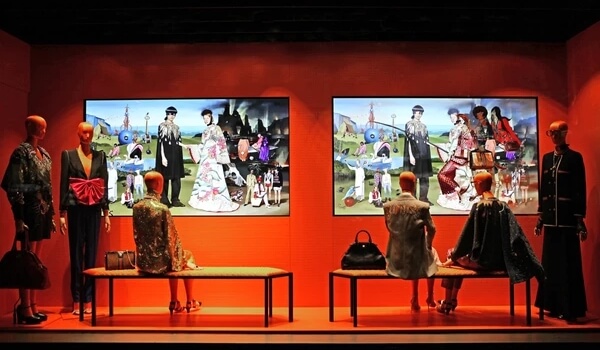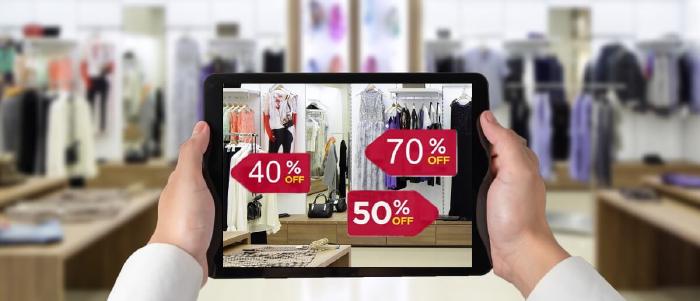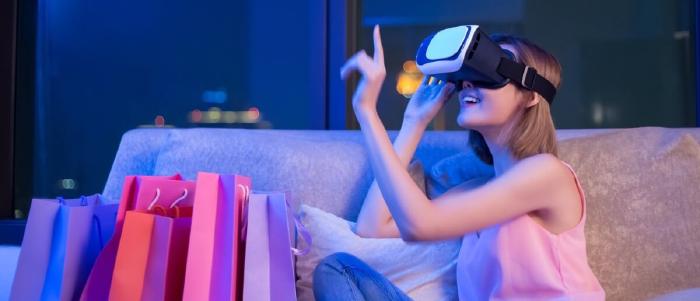
Sep 23 2022
7 min read

Retail store windows are all about creating great first impressions. And that is a reason good enough for store owners to invest in visual merchandising of the shop window displays.
Visual merchandising is a subtle art. As much as it contributes to making a store look aesthetically inviting, it also aims to generate more revenue by means of bringing in more customers to the store— customers who might have had no intentions to enter the store otherwise. In that sense, a window display is a brand’s most notable marketing statement.
What does your store promise to offer?
Why is your business better than the thousands of other shops selling similar products?
If the visual merchandising on your store’s window display is done right, it will reflect on your sales.
In this blog, we will go through some of the most remarkable visual merchandising designs. Hopefully, by the end of this article, your mind will be running wild with creative design ideas of your own that you can use for your store’s window displays.
Creativity silently evolves with the change in technology, the human psyche, and the business landscape. So, before sharing our useful tips, let’s discuss some trending storefront visual merchandising designs with real-life examples of successful brands.
Whether it is an out-and-out Wes Anderson movie-inspired theme or the designer’s original interpretation of any pop culture, there is a growing trend among visual merchandisers to blend cinematic stories with brand storytelling.
Here is an example of how art director Samar Younes brought back the golden days of rock-n-roll with an Elvis Presley-inspired visual merchandising setup for Coach’s window display. The luxury fashion brand featured its Spring 2017 collection with the hues of dissident and rebellious youths representing the 50’s American subcultures.

We are addicted to screens. So much so that our aesthetics have mutated in the post-digital era. A Pew research has reported that technology has “played a major role in broadening the boundaries of what is considered art.”
In visual merchandising, too, brands are converting the store windows into a hybrid display ecosystem of digital screens, mannequins, and physical props.
Digital signage is a regular among the business tools used for advertisement & marketing. However, in the past few years, LED signage has gained a lot of clout as a visual merchandising prop for swaying the average consumer’s purchase decisions.
Screens have proved to be the most valuable window display installations due to the power of audio-visuals, multimedia-based storytelling, and interactivity.
A fantastic example could be the window displays of the UK-based retailer John Lewis, precisely its retail outlets at Oxford Street and Sloane Square. Disrupting the tradition of subtle visual merchandising, the designers went bold and doubled their window displays for an experiential retailtainment campaign called ‘Beautiful On and Off.’

John Lewis’s storefront featured a series of Smart TVs and video walls that supported voice and gesture controls. The audio from the digital displays was carried across the glass window using invisible speakers.
The campaign also featured Samsung Smart TVs that invited the passersby to interact with them through a voice assistant. On saying “Hi TV,” the screens started playing content and showcasing its apps & features. The public engagement was mind boggling.
Gucci is another brand that has used digital signage for the visual merchandising of its shopfront display. As part of their Hallucination campaign, the Italian fashion house turned its window displays into an art gallery.
The storefront mannequins unprecedentedly faced away from the people on the street and looked toward LCD screens that showcased popular artwork characters sporting Gucci’s designs.
The innovative visual merchandising composition exuded Gucci’s romance with luxury, class, and progress. The window display also donned a QR code that enabled the spectators to view AR-mediated animated versions of the artworks on the Gucci app.
It was a much less extravagant use of digital screens than John Lewis’s, yet became so influential- another testimonial that screens can be used in the simplest ways to derive the most magnificent results.

Make sure your visual merchandising storytelling complements your brand voice and identity.
Your window display theme should be consistent with your indoor visual merchandising concept.
Understand the science behind the art- your audience will be on the other side of a glass window. So consider factors like distance, reflection, height, and focal point while crafting your storefront visual merchandising.
Consider the store location, culture, and audience demographics. This is particularly important if you are a global brand. Something acceptable in your country may appear offensive to the people in another part of the world.
Avoid cluttering your window with too many props.
Never underestimate or overlook lighting. Make sure that your lights are well-adjusted for different hours of the day.
Leverage digital reader boards for blending visual merchandising with your marketing strategy.
Study the latest visual merchandising trends. Also, survey what your competitors are doing. An outdated or lookalike window display style can make your store look like an imposter.
Do not forget design ethics or lose emotional intelligence. You may be a brand, but your customers are thinking and breathing individuals.
Update your window displays frequently. You can follow different seasons or festive occasions.
Give more, want less. Don’t go all crazy with promotional Call-to-Actions and loud ‘SALE’ cries. Instead, focus on giving your audience an experience that will make them curious about your store.
Use technology in some way or the other. You may not be able to afford the high-end dramas with Augmented Reality, Artificial Intelligence, or Virtual Reality. No problem. Just deploy a few digital screens, and use an efficient display software to run creative content that complements your visual merchandising storytelling.

We follow trends and examples of successful brands to learn from their mistakes and understand their success strategies. Now that we have discussed a few marvelous retail visual merchandising examples, let’s see what conclusions we can draw from them:
Simply putting together a few mannequins and background decorations wouldn’t bring results. Everyone does that. It helps if you tell a story that matches your brand voice.
If you are a beauty brand, tell the story of transformation, confidence, and the connection between inner and outer beauty. If you are a sports merchandise seller, your window display can discharge sports philosophies like inclusiveness, hard work, and healthy life.
As you have seen above, the most successful visual merchandising projects try to surprise the audience with a never-seen-before experience. Regardless of how it is done— by adopting cutting-edge immersive technology or simply defying the design paradigms— brand campaigns get etched in our minds when we experience something truly original.
We have seen visual merchandising compositions made of scrap metals and discarded plastic bottles. So, if that says anything, your window displays don’t necessarily have to cost you a fortune. Your store’s visual merchandising success depends on how well you connect with the crowd. If the creativity is memorable, it works.
There is no right way to make your window display work. The visual merchandising tips and trends are all only to inspire you. Your ideas can be far from the usual practice and it can still bring you incredible results. So, stay inspired and make the best out of your store’s window displays.
If you are planning to deploy screens at your retail stores, whether for visual merchandising or marketing & operations, Pickcel can help you get wonderful results. Try our software today or call us for a free demo.
You May Also Want to Read These:

Sep 23 2022
7 min read
![What are 3D digital billboards for advertising? [5 Examples]](/blog/images/3d-advertising-billboard/banner_hu3a52995533a2f5f6af3321531a883f0d_86539_700x0_resize_q75_box.jpg)
Sep 8 2022
6 min read

Sep 6 2022
9 min read

Aug 18 2022
6 min read
Take complete control of what you show on your digital signage & how you show it.
Start Free Trial Schedule My DemoSee How Amazon Solved Retail Marketing Challenges – Boosted Sales & Conversions by Almost 27%
Unlock Exclusive Insights